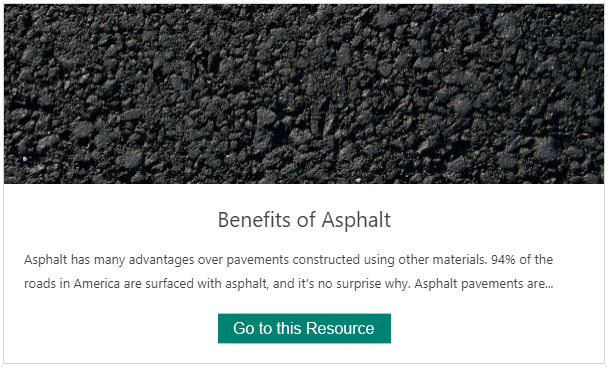Little Known Facts About A1 Professional Asphalt & Sealing Llc.
Little Known Facts About A1 Professional Asphalt & Sealing Llc.
Blog Article
How A1 Professional Asphalt & Sealing Llc can Save You Time, Stress, and Money.
Table of ContentsThe smart Trick of A1 Professional Asphalt & Sealing Llc That Nobody is DiscussingThe Basic Principles Of A1 Professional Asphalt & Sealing Llc A1 Professional Asphalt & Sealing Llc - QuestionsThe Facts About A1 Professional Asphalt & Sealing Llc UncoveredTop Guidelines Of A1 Professional Asphalt & Sealing Llc

The oil in a car engine is not just oil. The REOB includes all the additives that were in the waste oil as well as the wear metals from the engine (mainly iron and copper).
By making several blends using different REOB examples and different asphalt binders, the variations mostly can be balanced out. Numerous States offered examples of well-known REOB structure to TFHRC scientists, that analyzed the samples to contrast the portion of added (known) REOB to the discovered (tested) quantity. The evaluations showed a comparable portion of added and discovered REOB.
About A1 Professional Asphalt & Sealing Llc
They obtained a frustrating feedback. The TFHRC scientists assessed 1,532 samples from 40 States, one Canadian province, and 2 Federal Lands Freeway departments. They evaluated each sample twiceamounting to greater than 3,000 evaluations. None of those States understood that the asphalt they were buying had REOB. One State urged its examples had no REOB.
Of the 1,532 examples evaluated, 12 percent consisted of REOB, and some had appreciably high degrees of it at 1020 percent. The highest degree was 34 percent in a sample from Texas, which TxDOT had used in a patching compound. This testing also disclosed the existence of phosphoric acid in 11 percent of the examples, and 2 percent included ground tire rubber.
2 years earlier at TRB's annual meeting, the Federal researchers held an REOB workshop and presented the findings of their lab analyses to a standing room-only crowd. Some firms do not specifically ban REOB, they do impose physical tests that avert its useeffectively a restriction. Others do not prohibit it by requirements, but have contracts with asphalt distributors to prevent the usage of REOB
Excitement About A1 Professional Asphalt & Sealing Llc
A handful do allow REOB, some within particular restrictions. As an example, Ohio and Texas limit levels to much less than 5 percent of the asphalt. To create a reputable examination method that all States can use, the TFHRC scientists set up a round-robin examination strategy. The individuals are 11 State freeway agencies (Illinois, Massachusetts, Minnesota, Mississippi, Montana, North Carolina, Oklahoma, South Carolina, Texas, Vermont, and Wyoming), 2 independent screening laboratories, the Ministry of Transport in Ontario, Queen's College in Ontario, and an Ontario paving contractor.
In overall, the scientists prepared and shipped 720 blends. The participants are checking the examples individually utilizing the standards supplied by the TFHRC scientists. The round-robin testing is nearly finished, and TFHRC remains in the process of collecting the results. The site result will certainly be a recommended AASHTO examination technique that any kind of State can take on and make use of (a1 professional).
The pavement with REOB, which lies 0.6 mile (1 kilometer) from the sidewalk without REOB, has similar subgrade, web traffic thickness, and environment. Nonetheless, the section of Highway655 with 5 to 10 percent REOB revealed substantial breaking. In this example, the visibility of REOB was the determined cause of breaking at a low temperatures.
An area of test pavement in Minnesota (MN1-4) found to consist of REOB likewise cracked too soon. The sidewalk done well for the initial 3 to 4 years, yet then started to break.
A1 Professional Asphalt & Sealing Llc - An Overview
The examinations were not extensive, yet they showed that at degrees of 6 percent or more, the tensile strength of the asphalt went down significantly. At a level of 3.5 percent REOB, the variant in the physical examination methods was higher than the impact of REOB. Actually, it was challenging for scientists to examine whether REOB was present.

One binder criterion considered is the difference between the low temperature essential requirements temperature for rigidity (S) in the flexing light beam rheometer and the flexing beam rheometer creep incline (m-value) noted as Tcritical. TC = TC (S) TC (m-value). Evaluation of this parameter is still ongoing. 2 independent research teams, one from AASHTO and the other from the Asphalt Institute, concluded that even more research study is required on using REOB in asphalt.
Formerly, all asphalt testing gauged engineering residential properties such as rigidity. These tests do not show what materials had been included to the asphalt.

The Single Strategy To Use For A1 Professional Asphalt & Sealing Llc
These outcomes show there are weak points in the standardized engineering testing methods that may be exploited. The manufacturer might have a financial advantage and the product passes all the standard tests, yet the item might not be valuable to ensuring long-lasting performance. To address this concern and the development of new asphalt ingredients and extenders, TFHRC is beginning a research study program to utilize handheld spectroscopic tools, x-ray fluorescence spectroscopy, and Fourier change infrared spectroscopy to allow evaluations to be done in the area instead of having to take examples back to the lab.
Report this page